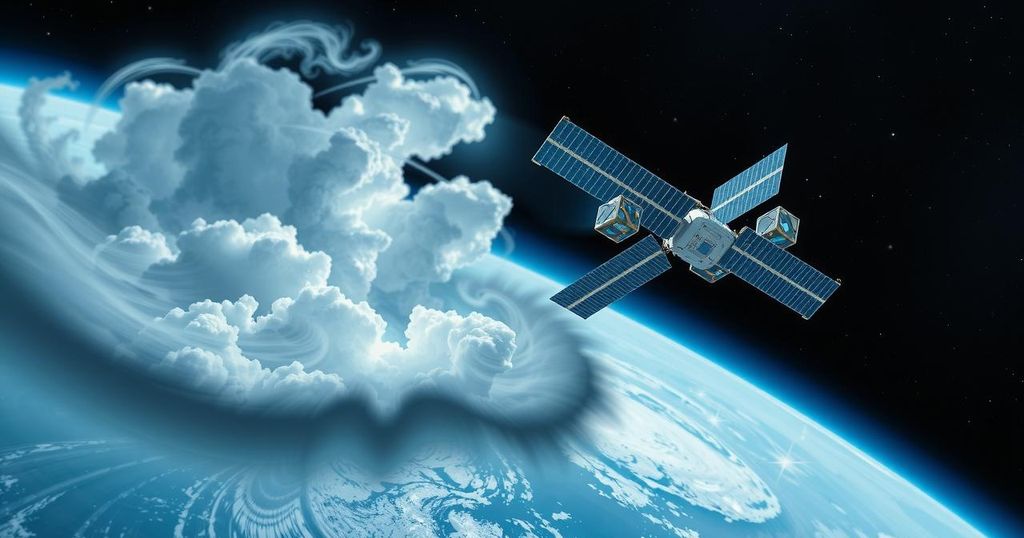Why Forecasters Are Concerned About Losing 3 Key Satellites Ahead of Peak Hurricane Season

- Meteorologists are poised to lose access to three key satellites.
- The DMSP satellites are crucial for hurricane forecasting processes.
- Forecasting has improved significantly but rapid intensification remains tricky.
- NOAA plans to shut down DMSP operations due to cybersecurity concerns.
- Other satellites provide lower-resolution data that is less effective.
- The upcoming hurricane season predicts six to ten hurricanes.
Concerns Raised Over Key Satellite Loss Amid Hurricane Season
Forecasters express serious concern as they prepare to lose three essential satellites just as we enter peak hurricane season. Every year, approximately 600 miles off the west coast of Africa, large clusters of thunderstorms start organizing into tropical storms. These storms are crucial to monitor in the early stages, especially since Hurricane Hunter flights cannot reach them until they grow stronger. Thus, the National Hurricane Center depends heavily on satellite data to gather vital information about storm locations, structures, and intensities, and this reliance is now threatened. Ever since June 25, 2025, the Trump administration had signaled that the Defense Meteorological Satellite Program, or DMSP, alongside the Navy’s Fleet Numerical Meteorology and Oceanography Center, would cease data collection by late June. Fortunately, following an appeal from NASA’s Earth Science Division, the actual termination has been pushed back until July 31.
How DMSP Satellites Aid Accurate Storm Forecasting
Meteorologists utilize the data from the DMSP satellites extensively for forecasting and analyzing storm patterns. The limitation of regular weather satellites is that they can only provide images during daylight hours. In contrast, infrared satellite data can be used around the clock, helping to reveal cold cloud-top temperatures that correlate with areas of high winds and intense rainfall. However, visible and infrared imaging alone do not give the complete picture of a storm’s behaviors. Enter the DMSP satellites. These orbit around Earth about 14 times a day and come equipped with special sensor microwave imager/sounder instruments, or SSMIS. These tools help meteorologists look deep into the storm clouds and gather data regarding the storm’s low-pressure center, which in turn helps forecast changes in the storm’s intensity, thus enhancing public safety through timely warnings.
Examining Possible Alternatives and Challenges
A concerning aspect is the fact that the DMSP satellites have outlived their initial lifespan by a significant margin. Launched between 1999 and 2009, they were originally meant to function for only about five years. Now, with operations extending beyond 15 years, the United States Space Force predicts these satellites might begin failing between 2023 and 2026. As for replacements, some other satellites in orbit, such as NOAA-20, NOAA-21, and the Suomi NPP, are equipped with advanced technology microwave sounders that can give similar data as the SSMIS satellites, albeit at a lower resolution. Meanwhile, the Space Force has recently started utilizing data from a new defense meteorology satellite, ML-1A, but it remains uncertain if this data will be accessible to vital forecast centers like the National Hurricane Center.
Implications of Data Loss on Upcoming Hurricane Season
The 2025 Atlantic hurricane season, spanning from June 1 to November 30, presents a worrying forecast with expectations of six to ten hurricanes forming. With the peak of the season occurring from mid-August to mid-October, it’s troubling that the DMSP data will go dark just before this critical time. While hurricane forecasters have multiple tools at their disposal, including radar and weather balloon data, the loss of DMSP satellite data combined with a general reduction in funding and staff could potentially endanger lives. Despite the odds, meteorologists remain committed to piecing together as much information as possible for better monitoring and warnings, but the looming absence of critical data is a pressing concern. Perhaps further discussion and action will arise from these challenges as the hurricane season progresses.
Meteorologists are justifiably alarmed about the impending loss of key satellite data as the hurricane season ramps up. With the DMSP satellites being crucial for accurate storm forecasts, the anticipated gaps in data could have serious implications for public safety. While alternatives exist, their efficacy may not match the capabilities of the outgoing satellites, leaving a potential void during a peak period for hurricane activity.






